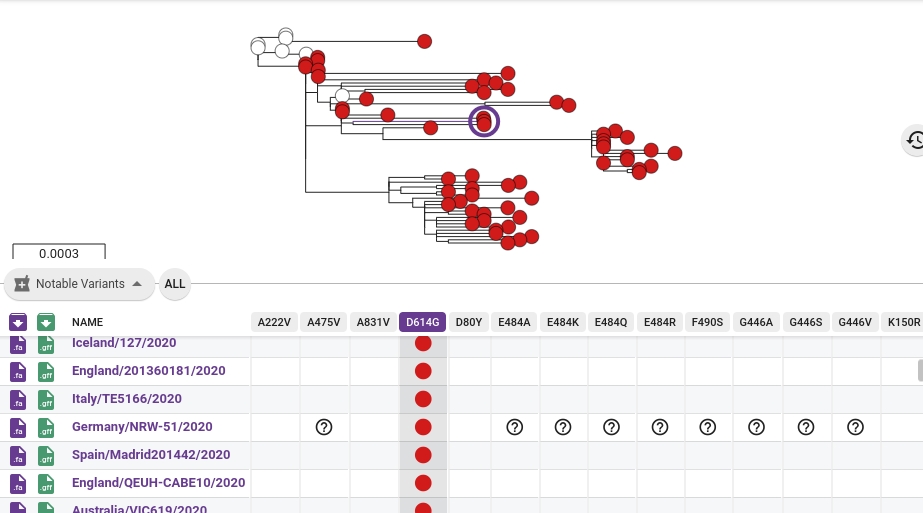SARS-CoV-2 Notable Mutations
Identification of mutations described in the Type Variants database
About
Genomes identified by Pathogenwatch as SARS-CoV-2 are searched against the Type Mutations database to identify mutations of significance to public health researchers. A full description of the database and software can be found here: https://cgps.gitlab.io/cog-uk/type_variants/.
Method
This tool hasn't been updated since it was released and there are now likely to be many new mutations of interest.
A modified version of the "type_variants" program is used to search against a curated database of variants. For each tested position, there are four possible outcomes: (1) wildtype; (2) mutation present; (3) another mutation; (4) sequence error - if the position is missing or contains one or more non-ATCG characters. If the mutation description contains a "*" that any mutation at that site is considered as "(2) mutation present".
Viewing the results
Genome Reports
Notable mutations are reported in individual genome reports with links to descriptions of the mutations in the Type Mutations website (e.g. for A222V view https://cgps.gitlab.io/cog-uk/type_variants/#A222V).

Collection Viewer
Notable mutations are shown for SARS-CoV-2 collections in a metadata table that can be accessed using the table switcher. Found mutations are shown as a red circle, while other mutations at those positions are shown in yellow. Question marks indicate sequence errors, while a blank cell indicates that location has the wild type/reference sequence. Mutations can be selected by clicking on the header and corresponding tree leaves and map markers will update to red, yellow, or white.

Browsing genomes with a mutation
It's possible to select genomes with a specific mutation in the Genome Browser by selecting "Betacoronavirus" in the "Genus" filter, "Severe acute respiratory virus" in the "Species" filter, and then "subsp. SARS-CoV-2". This enables the "Notable Mutations" filter, allowing genomes with a specific mutation to be selected.
How to cite
This tool has not been published and is currently not under development. Please contact us if you need any further information about it.
Last updated